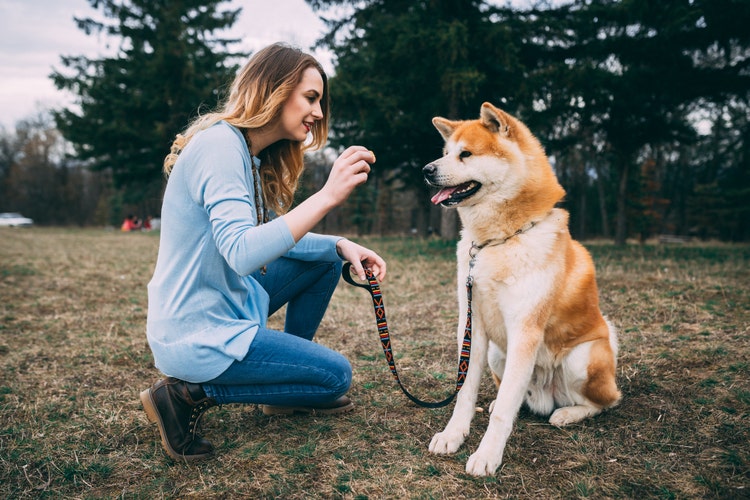
Akita


Where Are Akitas From?
The Akita is an ancient Japanese breed that is known for their independent, yet protective, nature. They were excellent trackers and hunters of large game, and also esteemed members of the family. The breed was first developed in the 1600s in the Akita sector of the most northern province of Japan (Honshu island). Their thick double coats protected them from the cold climate and defensive attacks of their prey.
In the household, Akitas often watched over the children in their families, and provided protection from unwelcome intruders. When dog fighting became popular in Japan in the 1800s, the Akita was crossed with the Tosa (a Japanese fighting dog) to increase their size and aggressiveness. Over the next century, interest in the breed waned. The Akita came close to extinction during World War II, but thanks to the American troops who smuggled them home, the breed survived.
Caring for an Akita
What Kind of Diet Does an Akita Need?
What Kind of Diet Does an Akita Need?
The Akita does well on a high-quality, large-breed diet. The breed is prone to gastric dilatation volvulus, so it may be best to feed them smaller portions and avoid exercise after eating.
How Much Grooming Does an Akita Need?
How Much Grooming Does an Akita Need?
The Akita has a thick double coat that sheds minimally, except in winter and spring months. At those times, daily brushing is needed. You won’t need to bathe your Akita often, as they do not have a “dog smell” and are catlike in their cleanliness.
Are Akitas Healthy Dogs?
Are Akitas Healthy Dogs?
Akitas are generally healthy, with an average lifespan of 10 – 13 years. They should be screened for hip and elbow dysplasia and ocular and cardiac disorders. Gastric dilatation volvulus (bloat) is a very common, life-threatening illness that afflicts Akitas. Keep your eyes open for symptoms and warning signs.
Akitas are predisposed to: gastric dilatation volvulus, hip dysplasia, elbow dysplasia, hypothyroidism, congenital cataracts, entropion, glaucoma, progressive retinal atrophy (PRA), retinal dysplasia, ventricular septal defect (VSD), pericardial effusion, juvenile onset polyarthritis, and zinc responsive dermatosis.
How Much Training Does an Akita Need?
How Much Training Does an Akita Need?
Akitas are a headstrong breed that needs training from an early age. Poor breeding and socialization may lead to aggression, so it is imperative that pet parents are comfortable with firm handling.
How Much Exercise Does an Akita Need?
How Much Exercise Does an Akita Need?
Akitas require moderate activity, such as daily leashed walks. They were bred to be independent, so they might not do well in dog parks or play groups. Although their aggression is typically towards other animals, use caution when playing with children.

Are You Ready to Adopt an Akita?
To adopt an Akita, start by making sure a dog of this size and demeanor will fit your lifestyle. Use our pet adoption checklist to walk through each step in the adoption process. Complete the necessary adoption applications and be prepared for interviews or home visits. Spend time with potential dogs to find a good match. Finally, prepare your home for the new pet, ensuring it's safe and welcoming.

Pet Insurance Options for Akitas
Pet insurance for an Akita may help cover costs for conditions like bloat and hip and elbow dysplasia. Consider a policy that includes hereditary and congenital conditions, flexible coverage options, and reasonable premiums.
Use our insurance aggregator tool to compare providers and find the best plan for your dog's unique needs.
What Are the Physical Characteristics of an Akita?
Akita Facts
Other Breeds to Explore
References
- Akita Dog Breed Information and Personality Traits. Hill’s Pet Nutrition, Inc., 2020.
- American Kennel Club. The Complete Dog Book. Random House Digital, Inc., 2006.
- Morris, Desmond. Dogs: The Ultimate Dictionary of Over 1,000 Dog Breeds. Trafalgar Square, 2002.
- Wilcox, Bonnie and Chris Walkowicz. The Atlas of Dog Breeds of the World. T.F.H Publications, Inc., 1995.


